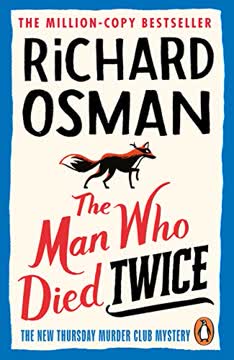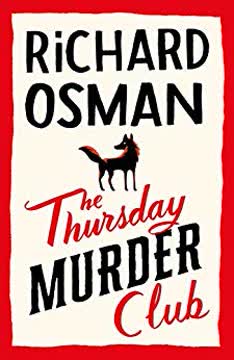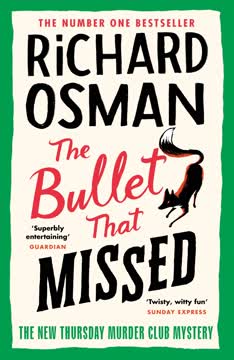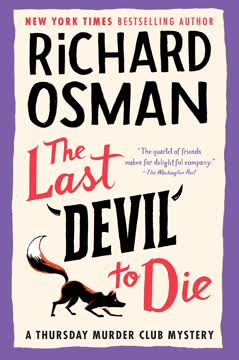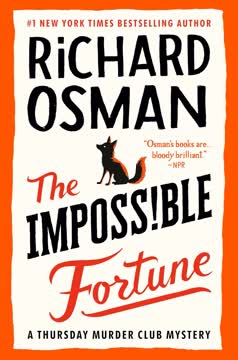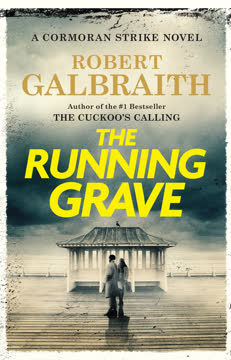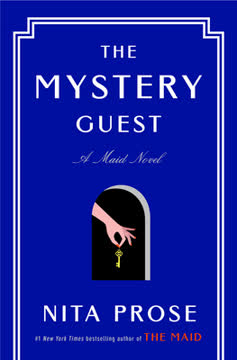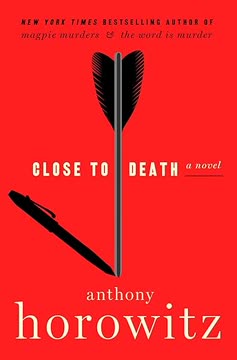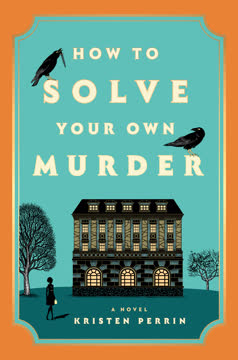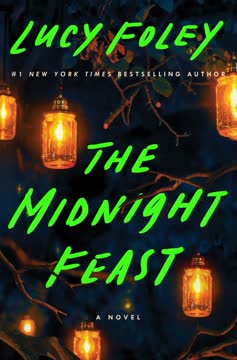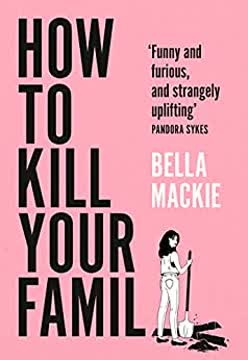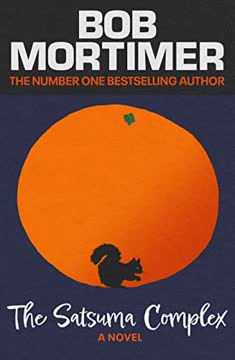Plot Summary
Thursday Club's New Mystery
In the tranquil retirement village of Coopers Chase, the Thursday Murder Club—Elizabeth, Joyce, Ron, and Ibrahim—gathers for their weekly meeting, only to be interrupted by a mysterious letter slipped under Elizabeth's door. The letter, signed by "Marcus Carmichael," a man Elizabeth knows to be dead, hints at secrets from her past as a spy. The group's banter is laced with humor and warmth, but beneath the surface, Elizabeth is unsettled. The letter's arrival signals the start of a new, more dangerous mystery, one that will test the bonds of friendship and the limits of their amateur sleuthing skills. The club's world, once filled with cold cases and gentle puzzles, is about to be upended by threats both old and new.
A Letter From The Dead
Elizabeth is drawn into a web of espionage when she visits the sender of the letter, only to find her ex-husband, Douglas, using the name of a dead man from their shared spy history. Douglas, now under MI5 protection, confesses he's in grave danger after stealing twenty million pounds' worth of diamonds from a criminal middleman, Martin Lomax. He needs Elizabeth's help to stay alive, as both the mafia and a Colombian cartel are after him. The Thursday Murder Club is pulled into the world of international crime, forced to balance their loyalty to Elizabeth with the risks of involvement. The stakes are higher than ever, and the line between friend and foe blurs as secrets from the past threaten everyone's safety.
Old Friends, New Threats
As Elizabeth juggles Douglas's request and the threat of violent retribution, the other club members face their own challenges. Joyce contemplates getting a dog, seeking comfort in routine, while Ron's grandson visits, bringing joy and a reminder of family. Ibrahim, ever cautious, decides to venture into town, determined to embrace life more fully. Meanwhile, local police officers Chris and Donna are surveilling drug dealer Connie Johnson, whose operations may intersect with the club's new case. The cozy world of Coopers Chase is invaded by violence and uncertainty, and the friends must rely on each other more than ever as danger draws closer.
Ibrahim's World Shattered
Ibrahim's attempt to step outside his comfort zone ends in tragedy when he is mugged and viciously beaten by a group of teenagers, led by Ryan Baird. The attack leaves him physically and emotionally shattered, shaking the club to its core. The friends rally around Ibrahim, vowing to seek justice when the police seem powerless. The incident exposes the vulnerability of even the most careful among them and ignites a desire for retribution. The club's focus shifts from solving cold cases to protecting their own, and the quest for revenge becomes deeply personal.
Douglas's Dangerous Confession
Douglas reveals the full extent of his predicament: he and his MI5 handler, Poppy, broke into Martin Lomax's house, inadvertently triggering a chain of events that led to the disappearance of the diamonds. Now, with criminal syndicates demanding their return, Douglas is a marked man. Elizabeth is forced to confront her complicated feelings for her ex-husband while weighing the risks of helping him. The club debates how much to involve themselves, but the lure of the mystery—and the threat to their friend—proves irresistible. The lines between right and wrong, past and present, become increasingly blurred.
Diamonds, Lies, and Spies
The Thursday Murder Club, now acting as Douglas's unofficial bodyguards, begins investigating the whereabouts of the diamonds. Their search leads them into the world of international crime, where trust is scarce and betrayal is common. Poppy, the young MI5 agent, struggles with the moral ambiguities of her job, while Elizabeth leverages her old spy skills. The club's investigation uncovers layers of deception, as it becomes clear that more than one party is searching for the diamonds—and that someone close to them may not be who they seem.
The Attack on Ibrahim
Despite Ibrahim's detailed description of his attackers, the police are unable to bring Ryan Baird to justice. The club, frustrated by the system's limitations, decides to take matters into their own hands. Elizabeth calls in favors from her intelligence contacts, and the group devises a plan to frame Ryan using his own criminal connections. Their actions blur the line between justice and vigilantism, but their loyalty to Ibrahim drives them forward. The attack galvanizes the friends, uniting them in a common cause and deepening their resolve to protect one another.
Revenge and Recovery
As Ibrahim recovers, the club's plan to bring down Ryan Baird unfolds. With the help of Bogdan, their resourceful friend, they plant evidence in Ryan's flat, leading to his arrest for drug possession. The victory is bittersweet—Ryan escapes before trial, but the club's sense of agency is restored. Meanwhile, the search for the diamonds intensifies, with clues pointing to a hidden location only Douglas knows. The friends reflect on the cost of revenge and the importance of forgiveness, even as they remain determined to see justice done.
The Safe House Breached
The club's world is rocked when Douglas's safe house is breached, resulting in the deaths of Douglas and Poppy. The crime scene is staged to suggest a double murder, but Elizabeth suspects a deeper plot. The club investigates, uncovering evidence that suggests one or both victims may have faked their deaths. The mystery deepens as they question who could have orchestrated such a scheme—and whether the diamonds are the true motive. The friends are forced to confront the possibility that one of their own may be involved in the deception.
The Search for Justice
The club's investigation leads them to Antwerp, where they hope to trace the diamonds' path through the international black market. Their journey is filled with humor and camaraderie, but the stakes remain high. They discover that Poppy may have been more involved than she appeared, and that her mother, Siobhan, is not who she claims to be. The friends piece together the clues, realizing that the key to the mystery lies in a series of coded messages and dead-letter drops. The search for justice becomes a race against time, as the true killer closes in.
The Biker and the Bracelet
Reviewing security footage, Ibrahim and Ron's grandson, Kendrick, spot a crucial detail: the mysterious biker who accessed the locker where the diamonds were hidden is wearing one of Joyce's handmade friendship bracelets. This revelation narrows the list of suspects to those close to the club. The friends realize that the killer must be someone within their circle, and suspicion falls on Poppy and her supposed mother. The discovery brings the club closer to the truth, but also puts them in greater danger as the killer seeks to cover their tracks.
The Truth About Poppy
The club uncovers the shocking truth: Poppy's handler, Sue Reardon, orchestrated the murders to steal the diamonds for herself. Poppy, caught in the crossfire of her mentor's ambition, is an unwitting pawn. Siobhan, revealed to be an old MI5 associate, helped stage the crime scene and mislead the investigation. Elizabeth confronts Sue, using her own spycraft to outmaneuver her. The friends' loyalty and ingenuity are put to the ultimate test as they work together to bring the killer to justice and recover the diamonds.
The Diamonds' Deadly Trail
With the diamonds recovered, Elizabeth devises a plan to lure all the remaining players—mafia, drug dealers, and the killer—into a single confrontation on Fairhaven pier. The club coordinates with the police and MI5, orchestrating a sting operation that brings the various threads of the mystery together. The meeting erupts in violence, with multiple deaths and arrests. The club's careful planning and quick thinking ensure that justice is served, but not without cost. The diamonds, the source of so much pain, are finally accounted for.
The Mafia Arrives
As the mafia arrives in Fairhaven, the club's plan is put to the test. Connie Johnson, the local drug dealer, is drawn into the scheme, while Bogdan and Ron pose as London gangsters to facilitate the sting. The tension is palpable as the various factions face off, each seeking the diamonds for themselves. The club's ability to manipulate events from behind the scenes is on full display, showcasing their unique blend of wit, courage, and resourcefulness. The confrontation marks the climax of the story, where all secrets are laid bare.
The Final Confrontation
The sting operation culminates in a deadly shootout, with the mafia and Martin Lomax meeting their end. Sue Reardon is exposed as the true killer, and her attempt to escape with the diamonds is foiled by the club's intervention. Elizabeth and Joyce, using their friendship and cunning, outmaneuver Sue and ensure her arrest. The club reflects on the cost of their adventure—the friends lost, the innocence shattered, and the bonds strengthened. The diamonds are donated to charity, bringing a measure of good from the chaos.
Aftermath and Healing
In the aftermath, the friends return to their routines, forever changed by the events they've survived. Ibrahim, once fearful, finds the courage to venture out again, supported by Joyce's gentle persistence. Ron embraces his role as a grandfather, finding joy in family. Elizabeth and Joyce deepen their friendship, sharing secrets and laughter. The club welcomes new beginnings, with Joyce adopting a rescue dog and the group looking forward to future mysteries. The healing process is slow but steady, as each member finds solace in the strength of their community.
Love, Loss, and Friendship
The story ends with a celebration of life's small joys: shared meals, games of chess, and the comfort of companionship. The friends honor those they've lost, remembering Poppy and Douglas with a mix of sorrow and gratitude. The Thursday Murder Club, undaunted by danger, remains united by their love of mystery and their unwavering loyalty to one another. As new challenges loom on the horizon, the club stands ready—older, wiser, and more determined than ever to face whatever comes next, together.
Characters
Elizabeth Best
Elizabeth is the formidable heart of the Thursday Murder Club, a retired intelligence officer whose sharp mind and unflappable demeanor anchor the group. Her past is filled with secrets, old enemies, and complicated relationships—most notably with her ex-husband, Douglas, whose reappearance triggers the novel's central mystery. Elizabeth's loyalty to her friends is unwavering, but she is haunted by the moral ambiguities of her former life. She is both mentor and protector, using her skills to navigate danger and deception. Over the course of the story, Elizabeth confronts her own vulnerabilities, learning to trust in friendship and accept help, even as she orchestrates the club's most daring schemes.
Joyce Meadowcroft
Joyce brings humor, empathy, and a keen eye for detail to the club. A retired nurse, she is the group's emotional center, offering comfort and practical wisdom. Her diary entries provide insight into the club's adventures and the inner lives of its members. Joyce's longing for connection—whether through adopting a dog or forging new friendships—drives much of her personal arc. She is underestimated by many, but her intuition and kindness often lead to breakthroughs in the case. Joyce's journey is one of quiet courage, as she learns to assert herself and embrace the messiness of life.
Ron Ritchie
Ron, a former trade union leader, is the club's blunt instrument—fearless, outspoken, and fiercely loyal. His working-class background and no-nonsense attitude provide a counterpoint to Elizabeth's sophistication. Ron's love for his grandson and his deep friendship with Ibrahim reveal a softer side beneath his gruff exterior. He is quick to anger when his friends are threatened, especially after Ibrahim's attack, and is willing to bend the rules to achieve justice. Ron's arc is one of redemption and growth, as he learns to channel his anger into action and support those he loves.
Ibrahim Arif
Ibrahim is the club's analytical mind, a retired psychiatrist whose caution and orderliness are both his strength and his Achilles' heel. His brutal mugging is a turning point, forcing him to confront his fears and reevaluate his approach to life. Supported by his friends, Ibrahim gradually regains his confidence, learning to balance caution with courage. His insights into human behavior are invaluable to the club's investigations, and his vulnerability endears him to the others. Ibrahim's journey is one of healing and self-discovery, as he learns to trust in friendship and embrace the unpredictability of life.
Douglas Middlemiss
Douglas, Elizabeth's ex-husband, is a charismatic but flawed former intelligence officer whose theft of the diamonds sets the plot in motion. His relationship with Elizabeth is complex—marked by love, betrayal, and lingering affection. Douglas is both victim and perpetrator, caught between his desire for one last adventure and the consequences of his actions. His confession to Elizabeth and subsequent murder (or apparent murder) drive the club's investigation. Douglas embodies the dangers of living in the past and the cost of unresolved ambition. His fate serves as a cautionary tale for the others.
Poppy
Poppy is Douglas's handler, a junior intelligence officer struggling with the ethical dilemmas of her profession. Her inexperience and vulnerability make her both sympathetic and tragic. Poppy's involvement in the case is marked by confusion and fear, as she is manipulated by those around her. Her relationship with her mother, Siobhan, and her trust in Elizabeth and the club add layers of complexity to her character. Poppy's fate is a stark reminder of the dangers faced by those who serve in the shadows, and her death is a catalyst for the story's resolution.
Sue Reardon
Sue is the novel's hidden antagonist, a senior intelligence officer whose ambition and cunning drive her to murder. Her partnership—and eventual betrayal—of Douglas reveals the dark side of loyalty and the corrosive effects of power. Sue's manipulation of the club, especially Elizabeth, showcases her intelligence and ruthlessness. Her eventual unmasking is a triumph of friendship and perseverance over deception. Sue's character is a study in the dangers of unchecked ambition and the moral compromises of espionage.
Chris Hudson
Chris is a local police detective whose friendship with the club is marked by mutual respect and gentle exasperation. His relationship with Donna, his protégé, and Patrice, his new love interest, adds depth to his character. Chris's struggle with self-doubt and his efforts to improve himself are both touching and relatable. He is drawn into the club's schemes, often against his better judgment, and his loyalty is rewarded with both professional and personal fulfillment. Chris's arc is one of self-acceptance and growth.
Donna De Freitas
Donna is Chris's partner and the club's ally within the police force. Her intelligence, determination, and sense of justice make her a valuable asset to the group. Donna's personal struggles—with loneliness, identity, and the search for meaning—mirror the club's own journey. Her relationship with her mother, Patrice, and her growing friendship with the club members highlight her capacity for empathy and resilience. Donna's arc is one of self-discovery and empowerment.
Bogdan Jankowski
Bogdan is the club's unofficial enforcer, a Polish immigrant whose skills and loyalty are invaluable. His mysterious past and quiet strength make him both intriguing and indispensable. Bogdan's willingness to bend the rules—and his capacity for violence when necessary—set him apart from the others. His friendship with Stephen, Elizabeth's husband, and his budding romance with Donna add layers to his character. Bogdan's arc is one of integration and acceptance, as he finds a place within the club and the community.
Plot Devices
Interwoven Mysteries and Multiple Perspectives
The novel employs a multi-layered narrative, weaving together the perspectives of the Thursday Murder Club members, police officers, and intelligence agents. This structure allows for a rich exploration of character and theme, as each chapter reveals new information and shifts the reader's understanding of the mystery. The use of diary entries, flashbacks, and shifting points of view creates a sense of immediacy and intimacy, drawing the reader into the characters' inner lives. Foreshadowing and red herrings are skillfully deployed, keeping the reader guessing until the final pages. The interplay between personal and professional stakes heightens the tension, as the club's investigation becomes a matter of life and death.
Dead-Letter Drops and Coded Messages
The use of dead-letter drops, coded letters, and hidden clues pays homage to the traditions of espionage fiction. These devices serve both as plot catalysts and as metaphors for the secrets and lies that define the characters' lives. The search for the diamonds is structured as a treasure hunt, with each clue revealing new layers of deception. The interplay between past and present—embodied in the letters from Douglas and the echoes of Elizabeth's spy career—underscores the novel's themes of memory, regret, and redemption.
The Power of Friendship and Community
At its core, the novel is a celebration of friendship, loyalty, and the resilience of the human spirit. The club's ability to work together, support one another, and find humor in adversity is both their greatest strength and the key to solving the mystery. The juxtaposition of the cozy world of Coopers Chase with the dangers of international crime highlights the transformative power of community. The novel's resolution—donating the diamonds to charity, healing old wounds, and embracing new beginnings—reinforces the message that love and connection are the true treasures in life.
Analysis
"The Man Who Died Twice" is more than a clever whodunit; it is a poignant exploration of what it means to grow old in a world that often overlooks the elderly. Richard Osman uses the Thursday Murder Club not only to entertain but to challenge assumptions about age, relevance, and capability. The novel's humor and warmth are balanced by moments of genuine pathos, as characters confront loss, vulnerability, and the limits of their own power. The interplay between personal and political, past and present, highlights the enduring relevance of experience and wisdom. The story's resolution—rooted in friendship, forgiveness, and the pursuit of justice—offers a hopeful vision of community and redemption. Ultimately, the novel reminds us that life's greatest mysteries are not found in diamonds or secrets, but in the bonds we forge and the courage we summon to face the unknown, together.
Last updated:
Review Summary
The Man Who Died Twice continues the Thursday Murder Club series, delighting readers with its witty dialogue, endearing characters, and intriguing plot. Many reviewers found it even better than the first book, praising the fast-paced storytelling and character development. The novel balances humor with heart, as the elderly sleuths tackle a complex case involving stolen diamonds, MI5 agents, and dangerous criminals. Readers appreciated the deepening friendships among the main characters and the clever mystery that kept them guessing until the end.
